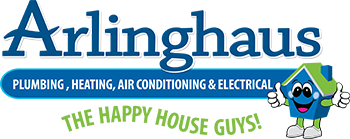With summer finally here, you may be making a list of home improvement projects you’d like to get done while the weather is good. But making investments into your home, either to increase property value or the comfort of your family, take more resources than you currently have. Your budget can stretch only so far, and if you have many improvements you’d like to make, getting them all done could take more time than you have. There is no choice but to prioritize. By considering your budget, time constraints, regular maintenance obligations and your overall ROI, you can put your plans in order and make them more likely to succeed.
Set a Budget
If you have a number of projects you would like to complete within the next few years, a discussion of budget should come first. You should set aside at least some of the money to expect to pay for the improvements before you get too far into the planning stages. On average, about 40 percent of home improvement dollars are spent on kitchens in the U.S. However, how much you decide to spend depends on your needs and what you can reasonably afford.
The difference between a minor kitchen remodel and a major one is almost $40,000, according to Remodeling Magazine’s Cost vs Value Report. Research the likely expenses you will encounter for any given improvement plan, and make sure your budget can accommodate it. If your dreams are too grand for the current state of your pocketbook, you can always try less expensive upgrades, like fresh paint, which can yield a unique look without a lot of new construction.
Prepare for Big Improvements
People start to consider how a significant home improvement project might fit into their lives a couple of steps into the project. You and your family may spend time looking at home improvement sites, viewing amazing before-and-after photos and generally getting caught up in the excitement of the project. You may even try to reverse-engineer a good start time by a desired end date. Instead, before you even start calling contractors, you should pull back, ask yourself the following questions and do a little research:
- How long does this project usually take?
- What factors are in my control?
- Which delays are most likely to happen?
- Are there environmental factors I should consider in planning?
- What inconveniences will I face during construction?
- What can I do if the project is significantly delayed?
Even with the best contractors, delays happen. The average kitchen remodel takes 4 to 8 weeks. What will you do if yours stretches to 10 weeks or more? Without a concrete plan, you may be left without a functioning kitchen or bathroom, reliant on fast food and takeout until the appliances are all put back into place.
Save Time for Key Maintenance Tasks
Unlike planned home improvements, maintenance tasks can often take people by surprise. The air conditioner dies, and suddenly you are spending a few thousand to replace it. The roof starts leaking and you decide it is time for a new one. The good news is that basic home maintenance costs far less than replacement, particularly if you do it on a regular basis. Home repair experts suggest that you set aside about 2 percent of your home’s value per year on professional service and some maintenance jobs you can do yourself. This budget may seem like a lot of money, but it covers dozens of responsibilities that would be much more expensive otherwise. For example, you might spend about $600 to repair a leaky roof so you do not have to replace everything in your attic after a bad rainstorm.
Decide to DIY or Hire a Pro
With the trend today emphasizing self-sustainability, the pressure is on homeowners to beautifully maintain and upgrade their homes with nary a professional on-site. However, DIY can be a mixed bag in terms of your overall property value. On the one hand, putting in a minor upgrade for your home by yourself saves money, which may improve your return on investment (ROI) should you plan to sell anytime in the near future. You may be able to reasonably install new flooring in your home without having to pay for the installation, even if you want hardwood or tile.
On the other hand, any task that requires professional skill (or access to professional equipment) puts you and your budget at risk. DIY is only cost-effective if you do not have to turn around and hire a professional to fix it for you. A badly-installed kitchen will not raise your property value. As such, it is best to take an honest look at your DIY project plans. If the project requires skills that are difficult to learn, and the products you install may be voided by improper installation, you should consider hiring a pro to do it for you.
Get the Family On-Board
Home improvement is a family affair. It should involve everyone in the house who can provide viable input and help during the remodeling process. Just as you have everyone in the house performing different chores to the support the family, everyone has a different role in determining which home improvement projects deserve the greatest precedence. For example, inadequate ventilation in the attic may be a minor hassle to everyone except the person who has the attic bedroom. Work together to create a list of plans that everyone has in mind, so that you can build a timeline that gets the most important jobs done first.
Use Organizational Tools
As many homeowners soon learn, home improvement projects often start to get hazy and overwhelming after the excitement of project planning wears off. For the more complicated jobs, you have to put things in order so you aren’t setting aside time to install the cabinets before they have actually arrived. For this, you can rely on your smartphone. There are apps designed to keep you on-task with valuable information on increasing the effect of your investment and improving your overall property value. Look at apps like Thumbtack or Home Maintenance Manager to organize your project workflow. For more information about your home appliances and what you can do to save money on home maintenance, download How Your House Works.
Classify by Schedule Constraints
Most of the time, you choose a schedule for home upgrades when they will not significantly inconvenience your family. However, there are times projects simply must happen right away or before certain events occur. For example, the middle of summer may not be the best time to add that in-law suite onto your home. However, if your in-laws or parents are relocating to your home in the fall, you would be better off if the construction was done by the time they arrive. Likewise, if you want to sell your home next year, you should prioritize your upgrades to emphasize the ones you need to get your home into selling condition.
Keep ROI in Mind
Ultimately, you are looking for the best return on your investment for your home and your property value. This does not necessarily mean that you have to spend on big, flashy improvements that have a great ROI for property value but deplete your savings so you can’t pay for necessary, regular maintenance. Balance the two and make sure you select improvements relative to your future plans for the home. If you do not plan to stay in the home for more than a few years from now, a lot of money spent on major upgrades may not yield the increase in sale price you might hope for. As a result, a $5,000 bathroom upgrade that you appreciate every day might be a better choice for you than a $25,000 kitchen makeover.
Getting your summer home improvement to-do list done feels like a never-ending task. Take charge by prioritizing your jobs according to your budget, schedule, moving plans and your intent to DIY or hire a professional. With a detailed plan in place, you can boost your property value and feel a greater sense of accomplishment.


